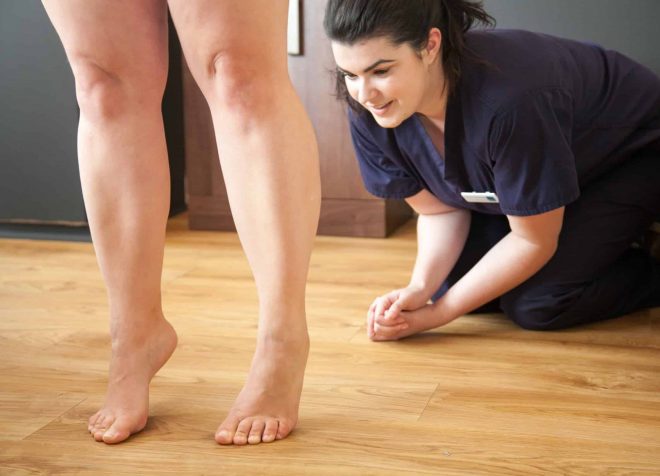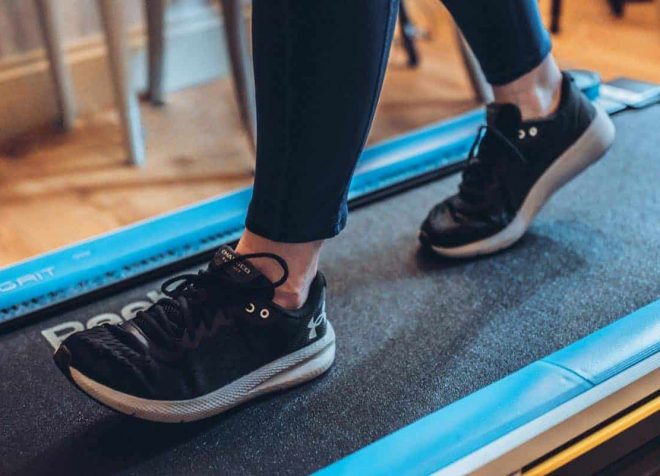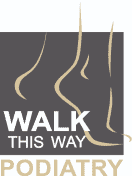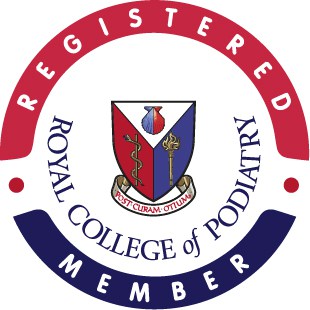Foot Pain
Foot pain is a common problem that affects millions of people around the world. The foot is a complex structure that contains numerous bones, muscles, tendons, and ligaments, which work together to provide support and stability to the body during movement. When any of these structures are affected, it can result in pain and discomfort in the foot.
The average person takes 8,000 to 10,000 steps per day. This repetitive motion causes stress and strain on the lower limbs, especially on the foot and ankle. Therefore, the natural process of ageing can develop abnormality, pain, and discomfort in your feet, leading to injury and musculoskeletal conditions. The deterioration process can depend on your foot type, muscle weakness, inflexibility, footwear and normal activity levels.

Foot Pain
Foot pain says a lot about your health. If your foot hurts chronically and foot pain is serious, it can be a sign of an underlying medical condition such as diabetes. Foot pain can also appear in the latest stages of pregnancy.
Most foot conditions can easily be managed and treated, enabling you to enjoy life no matter your age. It’s rare that foot pain is a sign of cancer or related to heart problems, even though the pain can be intense and radiate upon the leg. However, if the foot pain does not go away, you must get your feet checked by a podiatrist.At Walk This Way Podiatry, we can help you eliminate pain, restore motion and develop more flexibility, leading to a significant improvement in your health and overall wellbeing. We cover lower limb pain, dysfunction and deformity, including Plantar Fasciitis, bunions, hammertoes, flat feet / high arch feet, shin splints, Achilles Tendinopathy, Patella Tendinopathy, Hypermobility and Musculoskeletal disorders.
There are many different causes of foot pain, ranging from minor injuries to serious medical conditions. Some of the most common causes of foot pain include:- Plantar Fasciitis: This is a condition where the plantar fascia, which is a band of tissue that runs along the bottom of the foot, becomes inflamed and irritated. This can cause pain and stiffness in the heel and arch of the foot, especially in the morning or after prolonged periods of standing or walking.
- Bunions: A bunion is a bony bump that develops on the joint at the base of the big toe. It can be caused by genetics, wearing tight or ill-fitting shoes, or arthritis. Bunions can cause pain and stiffness in the affected area and can make it difficult to wear certain types of shoes.
- Morton’s Neuroma: This is a condition where a nerve that runs between the bones in the ball of the foot becomes compressed or irritated. This can cause pain, numbness, and tingling in the affected area, and can be aggravated by wearing tight shoes or engaging in activities that put pressure on the ball of the foot.
- Plantar Warts: Plantar Warts: These are small, fleshy growths that can develop on the bottom of the foot. They are caused by a viral infection and can be painful and uncomfortable, especially when walking or standing.
- Tendonitis: This is a condition where the tendons that connect the muscles to the bones become inflamed and irritated. It can be caused by overuse, injury, or certain medical conditions, and can result in pain and stiffness in the affected area.
- Gout: This is a type of arthritis that occurs when there is a buildup of uric acid in the body. It can cause severe pain and swelling in the affected joint, which is often the big toe.
- Arthritis: There are many different types of arthritis that can affect the foot, including rheumatoid arthritis, osteoarthritis, and psoriatic arthritis. These conditions can cause pain, stiffness, and swelling in the affected joints, and can make it difficult to walk or stand for prolonged periods of time.
- Stress Fractures: These are small cracks in the bones of the foot that are caused by overuse or repetitive stress. They can cause pain and discomfort, especially during activity, and can require rest and immobilisation to heal properly.
- Flat Feet: This is a condition where the arches of the foot collapse or flatten out, which can cause pain and discomfort in the feet, ankles, and knees. It can be caused by genetics, injury, or certain medical conditions.
- Ingrown Toenails: This is a condition where the toenail grows into the skin surrounding the nail bed, which can cause pain, swelling, and infection. It can be caused by improper nail trimming, injury, or genetics.
Foot Pain Assessment
If you are experiencing pain in your lower limbs or feet, and no cause has been established, the first step is to perform a biomechanical assessment. This examination helps us understand the root of your problem and determine what treatments are needed to alleviate symptoms.
When conducting a biomechanical assessment, we examine your lower limbs’ structure, alignment, strengths and weaknesses. This thorough process includes the examination of your pelvis, legs, knees, and feet to assess how they’re working as a whole and establish any abnormalities that may be affecting the others, leading to pain. In addition, we use gait analysis to treat individuals with conditions affecting their ability to walk. This method can help us identify posture or movement-related problems in people with injuries. By acquiring the fundamental parameters of a patient’s gait, using the OPTOGAIT system, we can quantitatively measure underlying mechanical inefficiencies and target any problematic areas. With this information, we can recommend a particular type of shoe and develop the correct exercises to address the patient’s specific needs adequately. In most instances, simple self-help measures along with specialist treatment at the clinic will result in a marked improvement in symptoms.Hammer and crowding of toes
Hammer toes are a common foot deformity that occurs when the toes bend or curl unnaturally. The condition can cause significant discomfort and pain, making it difficult to perform daily activities. One of the most common causes of hammer toes is crowding of toes.
Crowding of toes occurs when there is not enough space in the shoe for the toes to move freely. This friction can cause the toes to rub against each other, leading to irritation and inflammation. Over time, the crowding of toes can lead to the toe muscles and tendons to become imbalanced, resulting in the development of hammer toes. Hammer toes can also be caused by genetics, foot injuries, or nerve damage, but crowding of toes is a leading cause of this condition. People who wear tight shoes or high heels are at an increased risk of developing hammer toes. This is because these types of shoes force the toes into a cramped position, leading to toe crowding. To prevent crowding of toes and the development of hammer toes, it is important to wear shoes that provide ample space for the toes to move freely. Shoes with a wide toe box can help prevent toe crowding and reduce the risk of developing hammer toes. It is also important to avoid shoes that are too tight or narrow, as these can force the toes into an unnatural position. In addition to wearing the right shoes, there are several exercises that can help prevent crowding of toes and reduce the risk of developing hammer toes. Toe stretches, such as spreading the toes apart and holding them for several seconds, can help improve flexibility and prevent toe crowding. Rolling a golf ball or a small bottle under the foot can also help stretch the muscles and tendons in the toes and reduce tension in the feet. If left untreated, hammer toes can become more severe and lead to other foot problems, such as corns, calluses, and difficulty walking. In severe cases, surgery may be required to correct the deformity and relieve pain. In conclusion, crowding of toes is a common cause of hammer toes, a painful foot condition that can make it difficult to perform daily activities. Wearing shoes with a wide toe box and performing exercises to improve flexibility can help prevent toe crowding and reduce the risk of developing hammer toes. Get in touch with our team of podiatrists to determine the best course of treatment, if you are experiencing pain or discomfort in your toes.Plantar Fasciitis
Plantar fasciitis is a common foot condition that causes pain and discomfort in the heel and bottom of the foot. It is caused by inflammation of the plantar fascia, a thick band of tissue that connects the heel bone to the toes.
The pain of plantar fasciitis is typically located in the heel and bottom of the foot. It may feel like a stabbing pain or a dull ache. While some cases of plantar fasciitis may go away on their own, it is important to seek treatment if symptoms persist or become chronic. Treatment options may include stretching exercises, physical therapy, anti-inflammatory medications, and corticosteroid injections. Even with treatment, plantar fasciitis can sometimes come back or become chronic, particularly if the underlying causes of the condition are not addressed. Plantar fasciitis can affect the way a person walks and puts strain on other parts of the leg, leading to pain and discomfort in other areas. Orthotics are a popular treatment option for plantar fasciitis, as they can help provide support and cushioning to the foot. There are several types of orthotics that may be beneficial for those with plantar fasciitis, including custom-made orthotics, over-the-counter shoe inserts, and heel cups. Plantar fasciitis and shin splints are two separate conditions, but they can both be caused by overuse and improper footwear. Both conditions can be treated with rest, stretching, and orthotics. Anyone can develop plantar fasciitis, but it is more common in people who are overweight, have flat feet, or engage in activities that put a lot of stress on the feet, such as running or standing for long periods of time. With proper treatment and care, many people with plantar fasciitis are able to recover and return to their normal activities.Flat feet / high arch feet
Flat feet refer to a condition where the arch of the foot collapses, causing the entire sole to come into contact with the ground. The feet may also appear to turn outward or inward.
The human foot has a complex structure with 26 bones, 30 joints and over 100 muscles, tendons, and ligaments. All these parts work together like fine-tuned machinery to carry the body weight and propel its movement while giving the foot flexibility to adapt to different surfaces. The arch of the foot plays a vital role in weight-bearing and stability. It springs to the step and helps distribute body weight across the feet and legs. Its structure also determines how a person walks. Hence, the arches need to be both sturdy and flexible to adapt to stress and various surfaces. People with flat feet have no visible arch — the entire sole of their feet touches the ground when they’re standing. As a result, the natural mechanism of the foot is impeded, causing the malfunction of muscles, ligaments and tendons. When the different parts of the foot don’t function properly, the foot cannot provide the support your body needs, leading to foot pain. Flat feet can affect the body by altering the way weight is distributed across the feet and legs. Flat feet can be genetic, meaning that they can be passed down from one generation to the next. However, they can also be caused by other factors, such as injury, obesity, and ageing. But, where do flat feet hurt? Flat feet can cause pain in various parts of the foot, including the arch, heel, ankle, and ball of the foot. Pain can also extend to the knees, hips, and lower back. Some of the most common symptoms of having flat feet are: ● Tiredness in the feet with little movement or exercise ● Pain in the arches and heels ● Swollenness in the inside area of the hindfoot ● Difficulty when standing on your toes ● Back and leg pain Although having flat feet is not bad, it can lead to a range of problems, including foot and ankle pain, knee pain, hip pain, lower back pain, and poor posture. They can also increase the risk of developing foot conditions, such as plantar fasciitis and bunions. Furthermore, flat feet can cause knee pain by altering the way weight is distributed across the feet and legs, leading to increased pressure on the knees. Equally, flat feet can cause back pain by altering the alignment of the feet and legs, which can cause the pelvis to tilt forward or backward, leading to poor posture and back pain. Flat feet can also affect posture by altering the alignment of the feet and legs, which can cause the pelvis to tilt forward or backward, leading to poor posture. Flat feet can be corrected in children and adults with the use of orthotics, physical therapy, or surgery. However, treatment options may depend on the severity of the condition and the individual’s needs. Orthotics can help flat feet by providing support to the arch of the foot, redistributing weight across the foot and improving foot and leg alignment, reducing pain and discomfort. Some commonly recommended options include custom-made orthotics, arch support inserts, and heel cups. Flat foot surgery is usually considered when conservative treatments, such as orthotics or physical therapy, have not been effective in relieving pain or improving function.Achilles Tendinopathy
Achilles tendinopathy, also known as Achilles tendinitis or Achilles tendonitis, is a condition that affects the Achilles tendon, the largest and strongest tendon in the body. This tendon connects the calf muscles to the heel bone and is responsible for allowing us to push off the ground when we walk, run or jump.
The condition is characterised by pain and stiffness in the Achilles tendon, usually located around the heel or just above it. It is most commonly seen in athletes who engage in sports that involve jumping or sudden stops and starts, such as basketball or tennis. It can also occur in people who have suddenly increased their level of physical activity or who have been standing for long periods of time. Achilles tendinopathy is caused by overuse or repetitive stress on the tendon, which can cause tiny tears in the tissue. These tears can lead to inflammation and pain. Risk factors for developing the condition include a lack of flexibility or strength in the calf muscles, flat feet or high arches, obesity, and age (the condition is more common in middle-aged and older adults). Treatment for Achilles tendinopathy usually involves a combination of rest, stretching, and strengthening exercises. In some cases, nonsteroidal anti-inflammatory drugs (NSAIDs) or corticosteroid injections may be prescribed to reduce pain and inflammation. Physical therapy may also be recommended to help improve flexibility and strengthen, the muscles around the tendon. In severe cases where conservative treatments have not been effective, surgery may be necessary to repair the damaged tendon. However, surgery is typically only considered as a last resort. It is important to seek medical attention if you are experiencing symptoms of Achilles tendinopathy, as untreated cases can lead to a rupture of the tendon, which can require surgery and a longer recovery time. With proper treatment and rehabilitation, most people are able to fully recover from Achilles tendinopathy and return to their normal activities.Patellar Tendinopathy
Patellar tendinopathy, also known as jumper’s knee, is a common overuse injury that affects the patellar tendon, which connects the kneecap (patella) to the shinbone (tibia). It is commonly seen in athletes involved in sports that require repetitive jumping, such as basketball and volleyball.
The main symptom of patellar tendinopathy is a pain in the front of the knee, especially during activities that involve jumping, running, or squatting. The pain may be mild at first and may only occur after activity, but it can worsen over time and become persistent, even during rest. The exact cause of patellar tendinopathy is not fully understood, but it is believed to be caused by repetitive strain on the patellar tendon. This strain can lead to small tears in the tendon and inflammation, which can cause pain and stiffness. Treatment for patellar tendinopathy typically involves a combination of rest, physical therapy, and medication. Rest is important to allow the tendon to heal and prevent further damage. Physical therapy can help to strengthen the muscles around the knee, which can help to reduce strain on the patellar tendon. Medications such as nonsteroidal anti-inflammatory drugs (NSAIDs) may be prescribed to help manage pain and reduce inflammation. In some cases, more aggressive treatments may be necessary, such as platelet-rich plasma (PRP) therapy, which involves injecting a concentrated dose of platelets into the injured area to stimulate healing. Surgery may be necessary in rare cases where conservative treatments have not been effective. Prevention of patellar tendinopathy involves taking steps to reduce the risk of overuse injuries. This may include warming up properly before exercise, using proper techniques during jumping and landing, and gradually increasing the intensity and duration of activity over time. In conclusion, patellar tendinopathy is a common overuse injury that can cause pain and discomfort in the front of the knee. Early diagnosis and treatment are important to prevent further damage and facilitate healing. With proper care and preventative measures, most people with patellar tendinopathy can recover fully and return to their normal activities.Shin splints
Shin splints, also known as medial tibial stress syndrome, is a common condition that affects athletes and runners. It is characterised by pain and inflammation in the lower leg, specifically in the front or inner part of the shin bone. The pain may be sharp or dull and can worsen during physical activity.
Shin splints are caused by repetitive stress on the shin bone and surrounding tissues. This stress can result from various factors, such as running on hard surfaces, wearing worn-out or improper footwear, overtraining, or poor biomechanics. People who are new to exercise or have a sudden increase in their physical activity level are also at higher risk of developing shin splints. The symptoms of shin splints can vary depending on the severity of the condition. The most common symptom is a pain in the shin bone during or after physical activity. The pain may be localised or spread out along the length of the shin bone. Some people may also experience swelling or tenderness in the affected area. Treatment for shin splints usually involves rest, ice, and pain relief medication. It is also important to address any underlying issues, such as changing footwear or modifying training routines. Stretching and strengthening exercises may also be recommended to prevent future occurrences. Preventing shin splints involves several strategies. Gradually increasing the intensity and duration of physical activity can help reduce the risk of developing shin splints. It is also essential to wear proper footwear and maintain good running form. Stretching before and after physical activity can also help prevent shin splints. In summary, shin splints are a common condition that affects athletes and runners. The pain and inflammation associated with shin splints can be managed with rest, ice, and pain relief medication. Preventing shin splints involves gradually increasing physical activity, wearing proper footwear, maintaining good running form, and stretching before and after exercise.Hypermobility
Joint hypermobility, also known as ligamentous laxity, is a connective tissue disorder that primarily affects the musculoskeletal system, causing ligaments, joints and other tissues to exceed the normal range of motion for that structure. People with hypermobility are naturally very flexible and can move their limbs into positions others would find somewhat difficult.
Because Hypermobility changes the way joints work together, it alters the natural mechanism of the foot. As the connective tissues in the feet are looser, there is a greater likelihood of increasing the strain on the joints and the soft tissues (the muscles, tendons and ligaments) that hold everything together. Therefore, people with joint hypermobility are more prone to having low-arched or flat feet and have a higher risk of developing problems associated with flat feet like plantar fasciitis heel pain and posterior tibial tendon dysfunction. In addition, they are more susceptible to experiencing sprains, strains and dislocations, joint instability, and poor muscle strength. Causes for joint hypermobility vary. For most people, it’s an inherited condition that tends to run in their families. Studies have shown that this can be due to genetic changes in the collagen protein structure found in the tissues. When the tissues that help support and stabilise the joint are loose or stretchy, they cannot properly do their job, so the joints are hypermobile. Other cases reveal that hypermobility can result from low muscle tone, the shape of the bone ends or the body’s inability to sense the joint position (Proprioception). Hypermobility could also be a symptom of a disease or disorder like Ehlers-Danlos, Marfan’s and Down’s Syndrome. Joint hypermobility affects many children under the age of 10, but it resolves as they grow older. When the condition persists into adulthood, some people may experience symptoms such as: ● Joint pain, especially after physical activity ● Muscle fatigue causing tired, achy legs and feet ● Higher risk of sprains and dislocations ● Balance and coordination problems There are a number of treatments that can help you manage hypermobility, from an exercise programme to help strengthen the muscles and improve and stabilise the joints to using custom foot orthotics to support and stabilise the feet and legs. At Walk This Way Podiatry, we can help you find the most suitable solution to manage any symptoms and prevent injuries.Arthritic Feet
Arthritis is a common condition that affects millions of people worldwide, with the feet being one of the most commonly affected areas.
Arthritis can cause pain, stiffness, swelling, and reduced foot mobility, making it difficult to perform daily activities. When suffering from foot and ankle arthritis, you may feel: ● Tenderness when you touch the joint ● Pain when you move it, which becomes more prominent after you rest (sitting or sleeping) ● Trouble moving, walking, or putting weight on the foot ● Joint stiffness, warmth, or swelling Arthritic feet can be challenging to manage, but there are ways to alleviate the symptoms and improve the quality of life for those who suffer from it. Several types of arthritis can affect the feet, including osteoarthritis, rheumatoid arthritis, gout, and psoriatic arthritis. Each type of arthritis has its own unique set of symptoms and requires different treatments. ● Osteoarthritis is the most common type of arthritis and is caused by wear and tear on the joints over time. It typically affects older adults and can cause pain, stiffness, and reduced mobility in the feet. ● Rheumatoid arthritis is an autoimmune disorder that causes the body to attack its own joints, including those in the feet. If left untreated, this can lead to severe pain, swelling, and joint deformity. ● Gout is a type of arthritis that results from the build-up of uric acid crystals in the joints, including those in the feet. Gout can cause sudden and intense pain, swelling, and redness in the affected area. ● Psoriatic arthritis is a type of arthritis that develops in people with psoriasis, a skin condition. It can cause joint pain, stiffness, and swelling in the feet and other parts of the body. Treatment for arthritic feet can include medication, physical therapy, and lifestyle changes. Anti-inflammatory medications, such as ibuprofen or naproxen, can help reduce foot pain and swelling. Physical therapy can help improve mobility and strengthen the muscles in the feet. Lifestyle changes, such as losing weight, wearing supportive shoes, and avoiding high-impact activities, can also help alleviate symptoms. Surgery may sometimes be necessary to treat severe arthritis in the feet. This can include joint replacement surgery or arthroscopy, a minimally invasive procedure that uses a tiny camera to view and repair the joints. In conclusion, arthritic feet can be a painful and debilitating condition, but there are ways to manage the symptoms and improve quality of life. At Walk This Way Podiatry, when diagnosing arthritis, we will examine the foot thoroughly, looking for swelling in the joint, limited mobility and pain with movement as well as any form of corns, calluses, etc. If there is a deformity, we may discuss having X-rays taken to help us assess the extent of the condition. Unlike other conditions, arthritis has no cure. So when it comes to treating clients affected by it, we look at any abnormality that may be causing pain. This process allows us to create a personalised treatment plan focused on their individual needs and reducing symptoms, improving their quality of life.






